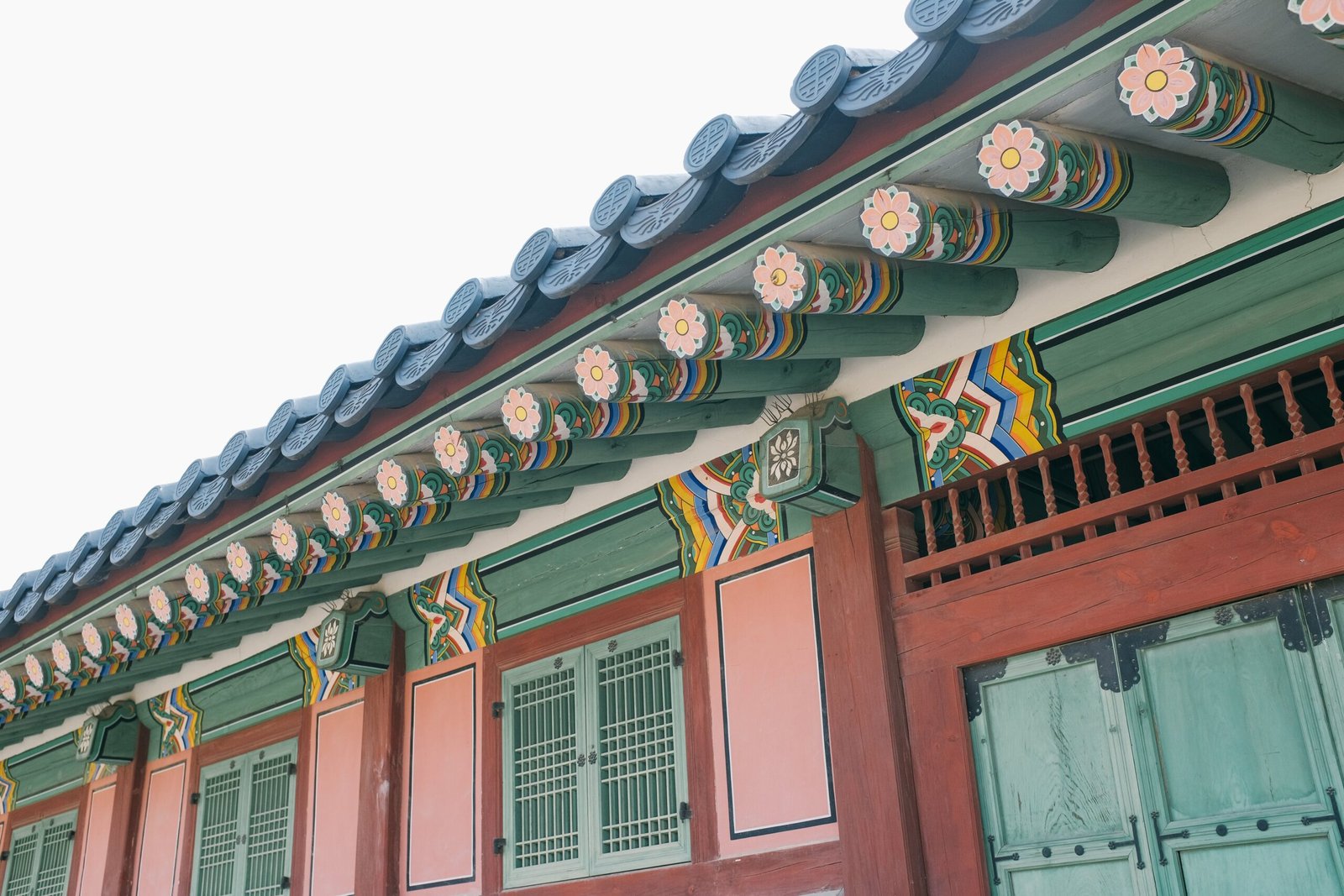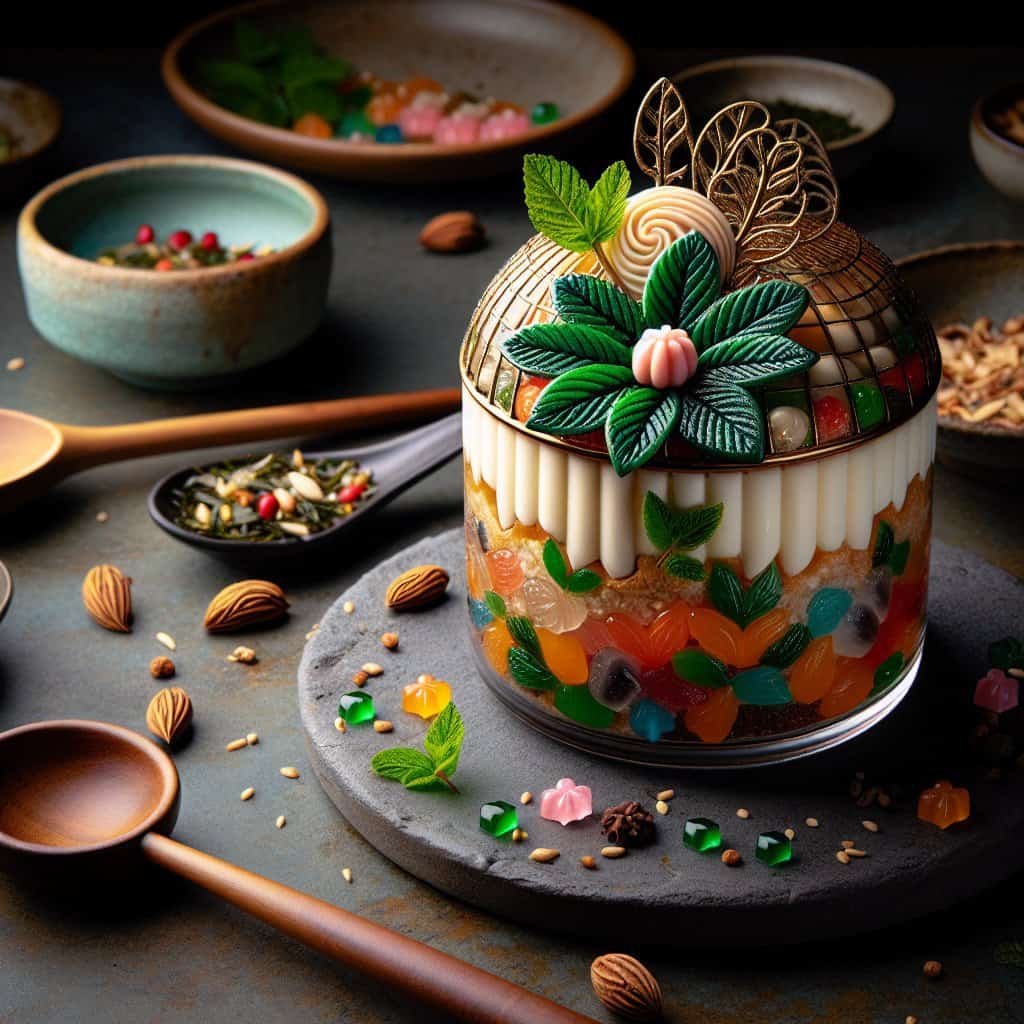Imagine adding a unique twist to your favorite desserts by incorporating Korean herbs. In this article, we will explore some unexpected and creative ways to infuse the flavors of traditional Korean herbs into your desserts. From incorporating the earthy taste of perilla leaves into ice cream to using the delicate aroma of mugwort in cakes, these ideas will tantalize your taste buds and introduce you to a whole new world of dessert possibilities. So get ready to embark on a culinary adventure that combines the best of Korean cuisine with the world of sweet treats.

Using Korean Herbs in Desserts
Introduction to Korean Herbs
Korean herbs bring a unique and flavorful twist to desserts, adding depth and complexity to sweet treats. These herbs have been used in traditional Korean cuisine for centuries, not only for their aromatic properties but also for their health benefits. By incorporating Korean herbs into your desserts, you can create delicious and innovative dishes that will impress your friends and family.
Benefits of Using Korean Herbs in Desserts
Using Korean herbs in desserts not only adds a delightful burst of flavor but also provides numerous health benefits. Many Korean herbs are known for their medicinal properties and have been used for centuries in traditional medicine. These herbs are often rich in antioxidants, vitamins, and minerals, making them a great addition to any dessert. By incorporating Korean herbs into your sweet treats, you can enjoy their unique flavors while also reaping the health benefits they offer.
Popular Korean Herbs for Desserts
1. Mugwort
Mugwort, also known as ssuk in Korean, is a herb widely used in Korean cuisine, including desserts. It has a slightly bitter and earthy flavor that pairs well with sweet ingredients. In desserts, mugwort can be used to infuse syrups, create flavorful ice creams, and add depth to cakes and cookies.
2. Perilla Leaves
Perilla leaves, or kkaennip in Korean, have a distinct flavor profile that is often described as a combination of mint and basil. These leaves add a refreshing and slightly spicy taste to desserts. Perilla leaves can be used to infuse creams, create unique whipped toppings, or garnish desserts for a pop of flavor and color.
3. Korean Mint
Korean mint, also known as hyssop, is a herb with a strong, refreshing, and cooling flavor. Its minty taste adds a burst of freshness to desserts. Korean mint can be used to make infusions for drinks like tea or cocktails, or to create flavorful syrups and sauces for drizzling over desserts.
4. Korean Angelica
Korean angelica, or danggui in Korean, is a herb commonly used in traditional Korean medicine. It has a sweet and slightly bitter taste, making it a great addition to desserts. Korean angelica can be used to infuse honey, create flavorful fillings, or even incorporate into baking to add a unique twist to cakes and pastries.
5. Ginger
Ginger is a versatile herb that adds warmth and a hint of spiciness to desserts. In Korean cuisine, ginger is often used in desserts to balance out the sweetness and add a bit of zing. Ginger can be used in various forms such as fresh, dried, or in powdered form to infuse desserts with its signature flavor.
6. Jujube
Jujube, or daechu in Korean, is a sweet and chewy fruit commonly used in Korean desserts. It has a mild and caramel-like flavor, making it a perfect filling for pastries or as a topping for cakes and ice creams. Jujubes can also be used to make syrups, which can add a delightful sweetness to a variety of desserts.

Traditional Korean Herb Desserts
1. Sikhye (Sweet Rice Punch) with Ginger and Cinnamon
Sikhye is a traditional Korean sweet rice punch that is often enjoyed as a dessert. By infusing ginger and cinnamon into the syrup used to make sikhye, you can create a flavorful twist on this classic dessert. The warmth of the ginger and the spice of the cinnamon add a delightful complexity to the sweet rice punch.
2. Bingsu (Shaved Ice) with Mugwort Syrup
Bingsu, a popular Korean dessert made with shaved ice, is elevated to a new level with the addition of mugwort syrup. The earthy and slightly bitter flavor of the mugwort syrup complements the sweetness of the shaved ice, creating a refreshing and unique dessert experience.
3. Patbingsu (Red Bean Shaved Ice) with Perilla Leaves
Patbingsu, another type of Korean shaved ice dessert, is taken to a whole new level by adding perilla leaves. The spicy and minty flavor of the perilla leaves enhances the taste of the sweet red bean paste and adds a refreshing twist to this beloved dessert.
4. Hotteok (Sweet Korean Pancakes) with Korean Angelica Honey
Hotteok, a popular Korean street food, can be transformed into a delightful dessert by incorporating Korean angelica honey. The sweet and slightly bitter taste of the Korean angelica honey pairs perfectly with the chewy and cinnamon-spiced pancakes, creating a unique and flavorful dessert experience.
5. Yujacha (Citron Tea) with Korean Mint
Yujacha, a traditional Korean citron tea, can be enhanced by adding Korean mint leaves. The cooling and refreshing flavor of the Korean mint complements the citrusy taste of the tea, creating a harmonious blend that is both soothing and invigorating.
6. Injeolmi (Korean Rice Cake) with Jujube Filling
Injeolmi, a traditional Korean rice cake made with glutinous rice, can be taken to the next level by adding a jujube filling. The sweet and caramel-like flavor of the jujube filling adds a delightful surprise to the soft and chewy rice cake, creating a delicious fusion of flavors and textures.
Creative Ways to Use Korean Herbs in Desserts
1. Korean Herb-infused Ice Cream
Infusing Korean herbs like mugwort, perilla leaves, or ginger into homemade ice cream is a creative way to incorporate their unique flavors into a classic dessert. The herbs can be steeped in the custard base before churning, allowing their flavors to infuse throughout the ice cream. The result is a deliciously aromatic and refreshing treat.
2. Korean Herb-flavored Macarons
Macarons, with their delicate almond meringue shells, can be infused with the flavors of Korean herbs. Whether it’s adding crushed perilla leaves to the shell mixture or incorporating Korean mint into the ganache filling, these herb-flavored macarons will surely impress with their unique and delicious taste.
3. Korean Herb Simple Syrup for Cocktails and Mocktails
Create a Korean herb-infused simple syrup by simmering herbs like ginger, Korean mint, or perilla leaves with sugar and water. This flavorful syrup can then be used to sweeten cocktails and mocktails, adding a refreshing twist to your favorite beverages.
4. Korean Herb-infused Chocolate Truffles
Elevate your chocolate truffles by infusing them with the flavors of Korean herbs. By infusing cream with herbs such as mugwort or Korean angelica, you can create a unique ganache filling that adds an intriguing depth of flavor to the rich and decadent chocolate.
5. Korean Herb-infused Cheesecake
Give your cheesecake a Korean twist by infusing it with the flavors of Korean herbs. Add crushed perilla leaves or ginger to the crust and incorporate Korean mint or jujube into the filling for a delightful and aromatic twist on the classic dessert.
6. Korean Herb-infused Panna Cotta
Panna cotta, a creamy Italian dessert, can be transformed by infusing it with the flavors of Korean herbs. By steeping herbs such as mugwort or Korean mint in the cream before setting, you can create a unique and delicious panna cotta that will wow your taste buds.

Tips for Incorporating Korean Herbs into Desserts
1. Choosing the Right Herb
Experiment with different Korean herbs to find the flavors that best complement your dessert. Consider the flavor profile and intensity of each herb and choose the one that will enhance your dessert the most.
2. Balancing the Flavors
Take into account the sweetness of your dessert and balance it with the flavors of the Korean herbs. Some herbs may be more subtle, while others may be more intense. Adjust the amount of herb accordingly to achieve a harmonious balance of flavors.
3. Experimenting with Different Combinations
Don’t be afraid to mix and match different Korean herbs to create unique flavor combinations in your desserts. Combine herbs with complementary or contrasting flavors to create a complex and multi-dimensional taste experience.
4. Adjusting the Quantities
The amount of Korean herbs used in a recipe can greatly impact the overall flavor. Start with a small amount and gradually increase if desired. Remember, it’s easier to add more herbs than to remove them, so go slow and taste along the way.
5. Using Fresh or Dried Korean Herbs
Both fresh and dried Korean herbs can be used in desserts, depending on availability and personal preference. Fresh herbs often have a more vibrant and intense flavor, while dried herbs offer a more concentrated taste. Adjust the quantities accordingly when using fresh or dried herbs.
6. Garnishing and Presentation
Don’t forget about the visual aspect of your dessert. Garnish with fresh Korean herbs or sprinkle powdered herbs over the top to add a touch of elegance and showcase the unique flavors you have incorporated into your creation.
Conclusion
Embrace the unique flavors of Korean herbs in your desserts and create delicious and innovative treats that will delight your taste buds and impress your guests. Whether you choose to use traditional Korean herbs in traditional desserts or get creative with new combinations and presentations, incorporating Korean herbs into your sweet creations is a surefire way to elevate your desserts to new levels of deliciousness. So go ahead, explore the world of Korean herbs and let their enticing flavors infuse your dessert creations with a touch of Korean culinary magic.

